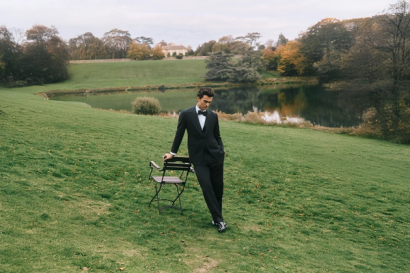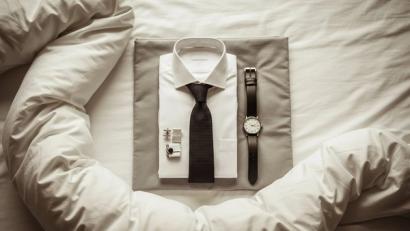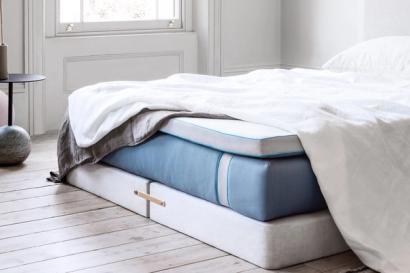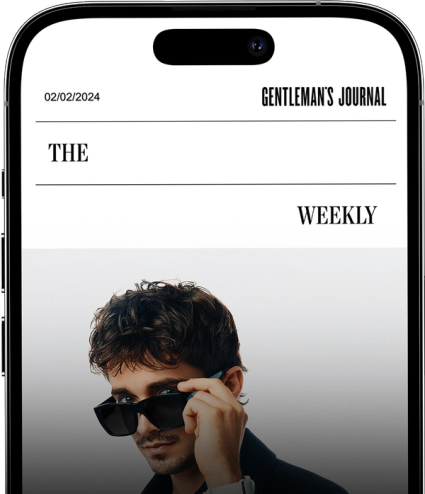

How to make autumn your most stylish season yet
Forget unruly city heatwaves and learn how to dress for autumn in serious style
- Words: India Gladstone
At the risk of sounding as English as they come, we’re growing a little weary of this heat for one reason only: dressing for summer is hard. The city heatwaves are impossible to combat, especially when you have to look presentable 5 days a week. So it’s with open arms that we’ll welcome Autumn, the perfect season to experiment with your look and switch things up from your summer dressing. It pays to be organised, too, so with help from The Chapar, make next season your most stylish yet.
Adam Fussell
The most stylish men in the world may make this look easy, but it’s hard to get right. The art of layering takes skill and patience, and it’s all about finding the right fabrics and pieces that fit perfectly together to make one complete outfit.
“The key is to start with the finest, most breathable material and progress to the heaviest on the outer layers. This helps with both comfort and function – you don’t want to be battling with multiple layers every time you enter or leave a room. It’s also important to utilise different tones and textures as you add items to make your look more interesting. The denim tuxedo is definitely a look to avoid!”
Alexandre Valerio
You don’t need to start dressing like the abominable snowman the second the temperatures drop. Instead, you need to learn and understand the different fabrics out there, which ones will serve you best and how best to mix fabrics. Doing so will ensure that you’ll not only be able to stay warm, but also that you’ll look incredibly stylish, too.
“English weather isn’t exactly known for its predictability but sadly the one thing you should always prepare for is rain (military wear is often your friend here due to its practical heritage). Another material to look out for is cashmere. Its heat regulating properties mean that a lightweight jumper can be up to eight times warmer than sheep’s wool whilst being incredibly soft, making it perfect to slip on over a shirt to combat changing temperatures without adding too much bulk.”
Philipp Mueller
The palette of your wardrobe should change slightly with the seasons. It’s not rocket science, but it helps differentiate different pieces. Summer is all about pastels, brighter colours and, if you’re feeling bold, a pattern or two. Autumn is all about greys, dark reds, greens and blacks. Think about the changing colours outdoors and dress accordingly.
“Though you’re looking to reduce your bright colours it doesn’t mean that autumn/winter dressing need be boring. The great thing about this time of year is that it affords you the opportunity to play about with more texture. Cashmere and wool both make for great under layers whilst fabrics like selvedge denim, leather, herringbone and tweed offer you a huge range of options depending on the look you want to achieve.”
Adam Fussell
In the summer, there are very few accessories that you actually need to consider. When it gets colder, however, accessories can start to seriously work in your favour. Invest in the best; we’re talking scarves, hats, gloves, even the right socks can help up your body temperature during the colder months – all you have to do is make smart choices.
“My biggest advice here is to invest in quality – you’re much off having one or two great scarves than a whole wardrobe full of them for example – as cheaper materials are often itchy and can cause irritation to your skin. They needn’t be reserved for the depths of winter either – try pairing your suit with some knitwear, a scarf and some quality leather gloves for a great transitional look that’s office-appropriate.”
Aline & Jacqueline Tappai Reynaud
The wrong jacket or coat can ruin a perfectly good outfit in one giant swoop, so it’s essential to pick your outwear wisely. One of the greatest pieces of advice we can give is to look to invest in a piece that’s going to last you a lifetime; it might be a blow to the bank account now, but in years to come when you’re still wearing it, you’ll be thankful.
“The first things to consider when buying a winter coat are longevity and practicality. Sure, that heavyweight fur coat you saw in Verbier last year might be appealing but if your day-to-day routine involves leaving your (warm) home and travelling in a (warm) car to your (warm) office, maybe it’s time to rethink that investment. Likewise, it’s easy to get sucked into trends. Buy classic: pea coats, trench coats and overcoats have long been mainstays of the well-dressed and continue to look the part year on year.”
This article was written in association with The Chapar.


